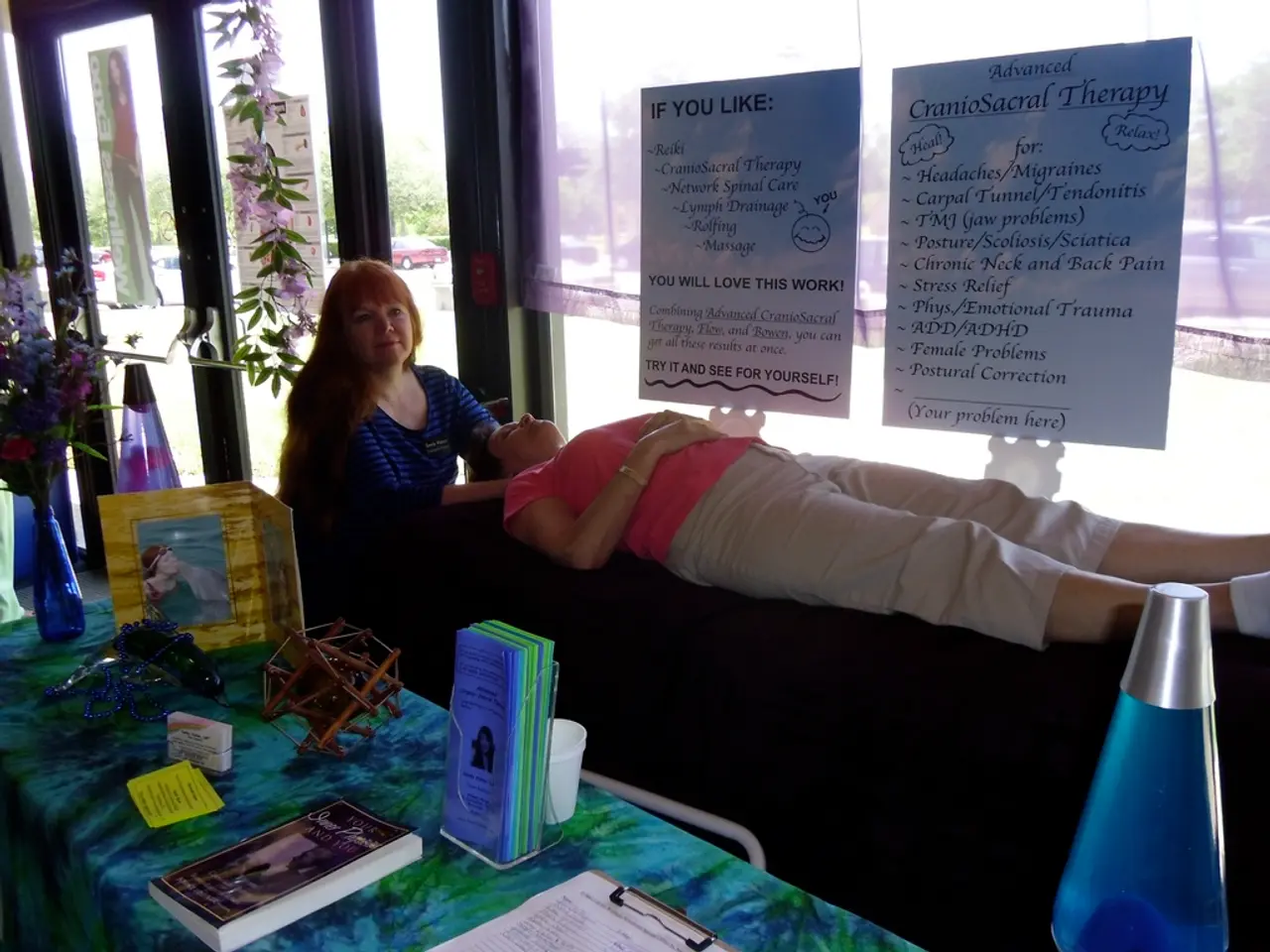Breathing Technique 4-7-8: Understanding Its Mechanism, Advantages, and Applications
The 4-7-8 breathing technique, a controlled breathing exercise developed by Dr. Andrew Weil, is gaining popularity as a natural way to manage stress and improve sleep quality. This technique, which has roots in ancient yogic pranayama practices, involves a specific pattern of inhaling, holding, and exhaling breaths.
### The Science Behind the 4-7-8 Technique
The method's physiological impact comes from its slow, deliberate breathing pattern. By inhaling for 4 seconds, holding the breath for 7 seconds, and exhaling for 8 seconds, the 4-7-8 technique can help activate the parasympathetic nervous system, promoting relaxation and counteracting the body's stress response.
By focusing attention on the breath and elongating the exhale phase, the technique can lower cortisol levels (the stress hormone) and reduce the heart rate, helping manage anxiety and stress responses. The paced breathing also helps slow the heart rate and quiet the mind, preparing the body for sleep, offering a natural tranquilizer effect without medication.
### Evidence and Endorsement
Several wellness and sleep sources highlight the 4-7-8 technique as an effective relaxation tool based on its physiological effects and subjective reports of anxiety reduction and improved sleep quality. Although direct large-scale clinical trials specifically validating the 4-7-8 method are limited, its principles align with well-studied breath control practices known to modulate autonomic nervous system activity and induce relaxation.
### Practical Recommendations
Practicing 4 cycles of the 4-7-8 technique twice daily is recommended for optimal benefit. Beginners may start with shorter breath-holding durations to avoid dizziness, gradually increasing to full counts.
To perform the 4-7-8 technique, a person should empty their lungs of air, breathe in quietly through the nose for 4 seconds, hold the breath for a count of 7 seconds, exhale forcefully through the mouth, pursing the lips, and making a "whoosh" sound for 8 seconds, and repeat the cycle up to 4 times.
### Benefits and Limitations
While the 4-7-8 breathing technique requires a person to focus on taking long, deep breaths in and out, there is limited clinical research to support the claims about this technique or other breathing techniques. However, deep breathing techniques, including the 4-7-8 breathing pattern, may help reduce anxiety and stress levels.
It is important to note that there is no reported significant side effect of the 4-7-8 breathing pattern, except lightheadedness, which can be mitigated by modifying the length of breaths or stopping the technique. A person may feel lightheaded after doing this for the first few times, so it is advisable to try this technique when sitting or lying down to prevent dizziness or falls.
### Conclusion
Scientific evidence supports that the 4-7-8 breathing technique reduces anxiety and promotes sleep mainly through its calming impact on the nervous system, as demonstrated by reductions in heart rate and stress hormones, and activation of relaxation pathways. It is widely endorsed by sleep experts and wellness professionals as a simple, drug-free method to manage stress and enhance sleep quality.
Mobile users can find apps to help them practice the 4-7-8 breathing pattern and remind them to use the technique throughout the day. A person may notice benefits after several days or weeks of doing 4-7-8 breathing consistently one to two times a day.
- The 4-7-8 breathing technique, originating from ancient yogic practices, can help activate the parasympathetic nervous system, promoting relaxation and counteracting multiple stress responses.
- By lowering cortisol levels and reducing the heart rate, the 4-7-8 technique offers a natural tranquilizer effect on mental health and sleep quality.
- Yoga, fitness-and-exercise, health-and-wellness, and sleep-related sources endorse the 4-7-8 technique as an effective tool for managing anxiety and improving sleep quality, despite limited direct clinical trials.
- To harness the benefits of the 4-7-8 technique, beginners may start with shorter breath-holding durations to avoid dizziness, gradually increasing to the recommended cycle of 4 cycles, twice daily.
- Science backs the claim that the 4-7-8 breathing technique reduces anxiety and promotes sleep through its calming impact on the nervous system, evidenced by decreases in heart rate and stress hormones, and the activation of relaxation pathways.
- The practice of the 4-7-8 breathing technique has minimal reported side-effects, with lightheadedness being the most common, which can be mitigated or avoided by modifying the length of breaths or practicing while sitting or lying down.




